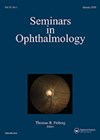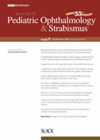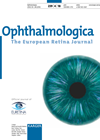
Journal Reviews
Features of bacterial orbital cellulitis on MRI imaging
This multi-centre retrospective study from Australia and the UK examined the quantitative and qualitive parameters of magnetic resonance imaging (MRI) imaging in bacterial orbital cellulitis. Twenty MRI scans from 20 patients with pre-septal and orbital fat involvement (mean age: 40.8...
Long-term outcomes of using intraoperative relaxed muscle positioning technique in thyroid eye disease
The authors present a retrospective case review of consecutive patients undergoing ocular muscle surgery by one ophthalmologist using the intraoperative relaxed muscle positioning (IRMP) technique for thyroid eye disease (TED)-associated strabismus over a 23-year period. The following data were extracted...
Macular choroidal changes after inferior oblique muscle surgery
This study was undertaken to investigate the retinal neurovasculature, choroidal thickness and choroidal vascular index (CVI) changes at the macula at one week, one- and three-month intervals post inferior oblique muscle myectomy. The hypothesis was that, given the close proximity...
BT vs primary surgery for infantile esotropia
In this study, the success rate of treatment for infantile esotropia (IET) patients who had surgery because of under correction after botulinum toxin (BT) is compared to those having primary surgery. The study included 52 patients (27 male) with mean...
Differences in strabismus surgery outcomes in preterm vs full-time birth infants
This study aimed to analyse motor and sensory outcomes of strabismus surgery in 70 preterm (group 1) and 242 full-term (group 2) infants. Group 1 mean gestational age and birth weight were 31.25 ±2.51 weeks and 1562.70 ±412.82g. Pre and...
Barriers to diagnosis and management of VKC
The authors investigate the lived experience of vernal keratoconjunctivitis (VKC) diagnosis and treatment in US patients, reported by their carers and eyecare clinicians, and to identify barriers to the timely diagnosis and management of this condition. The study included seven...
Verteporfin shortage: treatment options and outcomes in chronic non-resolving central serous chorioretinopathy
Half-dose photodynamic therapy (HD-PDT) with verteporfin has been the therapy of choice in non-resolving central serous chorioretinopathy lasting longer than four months. Since 2021, a worldwide shortage of verteporfin due to manufacturing issues prompted adjustments in treatment practices. This retrospective,...
Google searches predict pathology after a solar eclipse
This light-hearted review identified that the Google search term, ‘my eyes hurt’ was trending on 8 April 2024, coinciding with the exact time when a total solar eclipse passed over the US. They identified the subregions that searched this term...
Junior doctors in emergency departments lack confidence when managing ophthalmic emergencies
This systematic review assessed the confidence of doctors in the UK working in emergency departments (EDs) to manage ophthalmic emergencies, with secondary outcomes looking at doctor’s confidence in performing fundoscopy and using the slit-lamp, and training received in the ED....
Does modern radiological imaging detect lesions associated with internuclear ophthalmoplegia?
The authors present a retrospective case review including all patients with a diagnosis of internuclear ophthalmoplegia (INO) presenting to two tertiary neuro-ophthalmology centres over a five-year period. The aim of the study was to assess the sensitivity of modern radiological...
Sensory and motor function changes after surgery for epiblepharon
In this study the authors investigate the effect of epiblepharon (EB) correction on motor and sensory function in children with EB and comorbid strabismus. Ninety eyes of 45 children were evaluated: mean age 6.8 ±2.9 years, 18 males, 27 females,...
Re-evaluation of virtual reality visual field testing
This study evaluated an updated testing algorithm to determine its dynamic range, and to assess if this produced a suitable central hill of vision, and to evaluate test-retest reproducibility in healthy children. This was a prospective study of children with...










